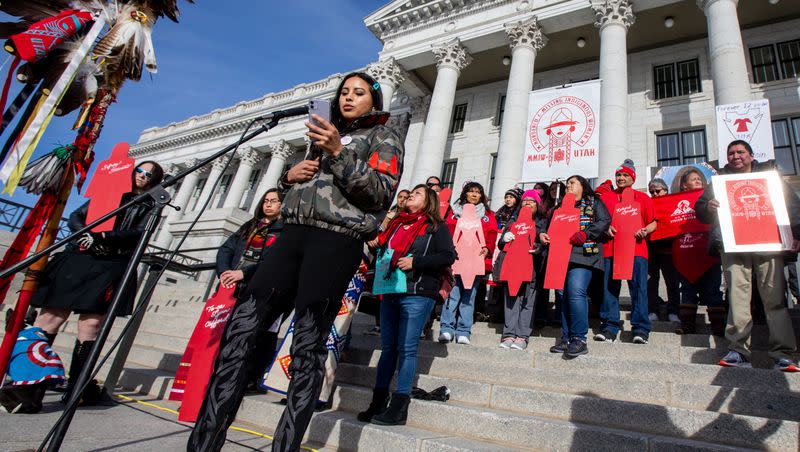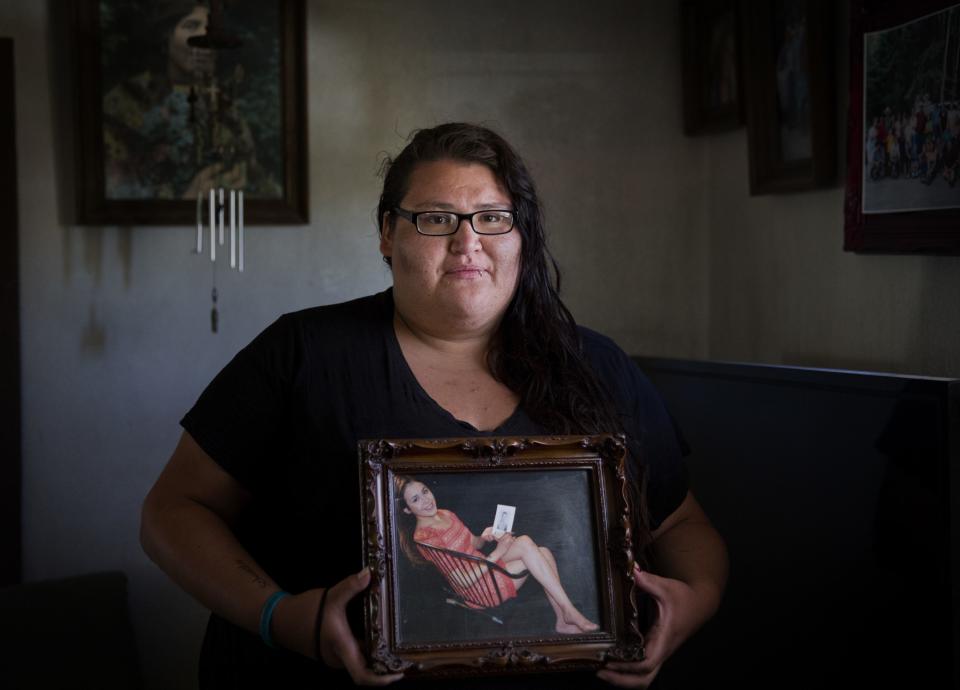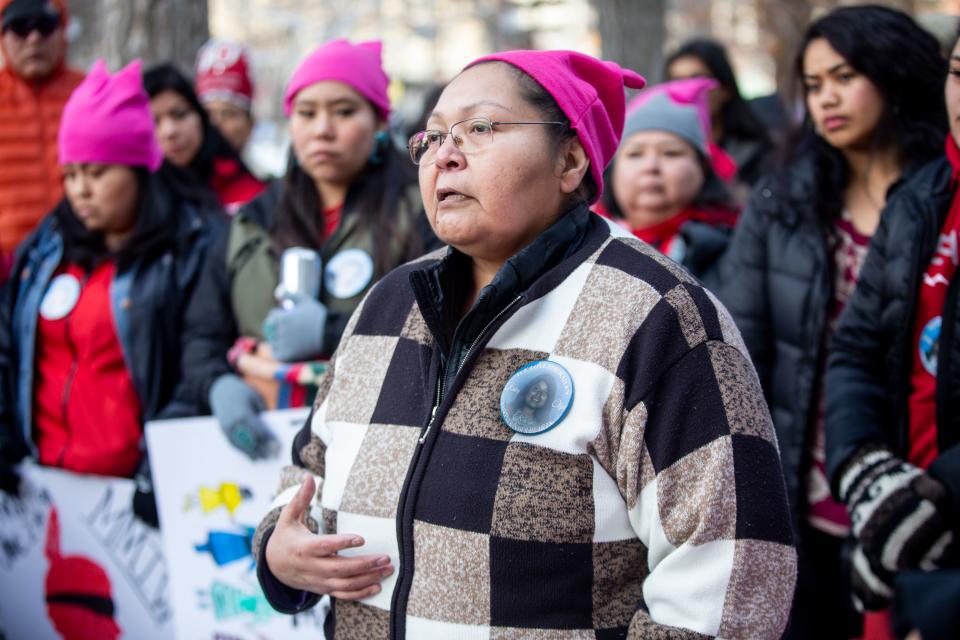What is Missing or Murdered Indigenous Persons Awareness Day and why do we observe it?

In 2021, President Joe Biden proclaimed May 5 to be Missing or Murdered Indigenous Persons Awareness Day. The announcement followed years of efforts by advocates to create greater public awareness of violence against Native American people, per the Choctaw Nation.
“On Missing or Murdered Indigenous Persons Awareness Day, we remember the many lives shattered or lost, and commit to working with Native communities to find justice, keep families safe and help them heal,” the White House said in a statement.
“Indian Country has been gripped by an epidemic of missing or murdered Indigenous people, whose cases far too often go unsolved. Families have been left investigating disappearances on their own, demanding justice for their loved ones, and grieving pieces of their souls. Generations of activists and organizers have pushed for accountability, safety and change. We need to respond with urgency and the resources needed to stop the violence and reverse the legacy of inequity and neglect that often drives it.”
In addition to awareness, advocates are fighting to bring justice to Native victims of violent crime and provide support to victims and their communities.
The movement is also referred to by other names:
Missing and Murdered Indigenous Women (MMIW)
Missing and Murdered Indigenous Women and Girls (MMIWG)
Missing and Murdered Indigenous Women and Relatives (MMIWR)
Missing and Murdered Indigenous Women, Girls and Two-Spirit People (MMIW2SP).
The disappearance of Ashley Loring HeavyRunner
In 2019, The Guardian published an in-depth report on the disappearance of Ashley Loring HeavyRunner, who was last seen June 13, 2017, on the Blackfeet Reservation in Montana.
Upon returning to Missoula from a trip a week later, Kimberly Loring was expecting a call from her 20-year-old sister. When that call never came, it wasn’t immediately a cause for concern.
Alarm bells sounded a few days later, however, when their father was unexpectedly admitted to the ICU and Ashley didn’t show and couldn’t be reached, according to the article, “A young woman vanishes. The police can’t help. Her desperate family won’t give up.”
Loring sought help from tribal police.
“No one took it seriously,” Loring told The Guardian. “They just said: ‘She’s of age, she can leave when she wants to.’ When we talk to other families whose girls went missing, they say that’s what they got from law enforcement, too. It’s not a proper response.”
In the years since her sister’s disappearance, Loring has taken charge of her sister’s case. She quit her full-time job and moved back to her grandmother’s house.

“Kimberly took matters into her own hands,” The Guardian reported. “She trekked up and down the mountains looking for clues, calling Ashley’s name, scrambling into rocky ravines, digging up fresh mounds of earth, analysing bones, chasing off grizzly bears. She followed every lead — many of them infuriatingly vague and horribly gruesome — and took every phone call, read every message, met anyone on the street who wanted to talk,”
“Every day is a nightmare,” Loring told The Guardian. “We don’t know what really happened to her. There’s rumors about her being hurt and her body put places, being all cut up and scattered on the mountain.”
“That’s why I search for her. That’s why I go out in the mountains and look. I don’t want my baby sister laying out there alone.”
What the numbers say
Ashley Loring HeavyRunner’s case isn’t unique. She’s one of thousands of missing Native Americans.
The biggest difference in her case is the level of publicity it has received, much of which is due to her sister’s determination to find Ashley.
This level of coverage, though rare, is key to bringing awareness to the Missing and Murdered Indigenous Persons movement, the driving force behind the designation of MMIP Awareness Day.
The crisis of violence against Native communities must end. It’s time to stand up for Native families and relatives who are constantly left behind. Visit https://t.co/tVdRM48ayQ for more info, resources, and to learn how to get involved. #MMIW #NoMoreStolenSisters pic.twitter.com/gelJpNzijA
— National Congress of American Indians (@NCAI1944) May 1, 2023
According to a National Congress of American Indians Policy Research Center report, 84.3% of American Indian and Alaska Native women experienced violence, 56.1% have experienced sexual violence and 48.8% have been stalked.
A 2016 National Institute of Justice report says Native women are also 10 times more likely to be a victim of murder than the general U.S. population.
According to an Interior Department report, “Community advocates describe the crisis as a legacy of generations of government policies of forced removal, land seizures and violence inflicted on Native peoples.”
Understanding violence against Native Americans
Jessica Keating, of Notre Dame’s Office of Life and Human Dignity in the McGrath Institute for Church Life, wrote about the historical impact of government policies on native populations in “Teaching Human Dignity: The Assimilation, Removal, and Elimination of Native Americans.”
“The two primary means by which the federal government sought to eliminate the ‘Indian problem’ were assimilation and land divestment, which constituted death by other means. However, alongside cultural elimination, and intersecting with it, elimination also included the physical deaths of millions of Native peoples,” Keating wrote.

The 1978 Oliphant v. Suquamish Indian Tribe case, in which the Supreme Court decided that tribal law enforcement does not have the jurisdiction to prosecute non-Natives for crimes they committed on Indian reservations, catalyzed the movement for modern-day activists — and continues to impact cases involving Native victims.
For example, at the time of Ashley Loring HeavyRunner’s disappearance, the Blackfeet Reservation’s tribal police force consisted of “only 15 officers and four sergeants, who are responsible for patrolling more than 1.5 million acres of reservation land, an area larger than Delaware,” per ABC News.
Native communities may also lack trust in law enforcement agencies, which poses another barrier. Brian Dubray, chief of police at the Confederated Tribes of Coos, Lower Umpqua and Siuslaw Indians Police Department, said to Indian Country Today, “There is a lack of trust, a delegitimizing on both sides, and some of that’s the historical relationship between the state and the tribe.”
The ways officials enter data regarding crimes against Native people can also present an issue, a 2018 study conducted by the Urban Indian Health Institute found.
The study concluded that, “The challenges and barriers in accessing data on this issue from law enforcement severely impede the ability of communities, tribal nations, and policy makers to make informed decisions on how best to address this violence.”
The report also cites the incidence of racial misclassification and discrimination as factors in reporting that contribute to the data issue.
Individual efforts to bring awareness
We R Native outlines the following ways to bring awareness to the movement.
Educate yourself by reading up on terminology, cases, legal action and history. You can find some of that information in these sources:
“Murder in Bighorn” limited series
Offer shame-free and stigma-free support to victims, regardless of substance misuse, housing circumstances and sexual activities.
Amplify Native voices on social media and within your community by sharing this knowledge.
🔊ON
😂👇🏾'Jesenia Velez, #Blackfeet🐾Nation out of Browning MO...2day I am dancing 4 Selena Not Afraid & Ashley Loring Heavy Runner, both #MMIW fr Montana...❤TY...S/O Black Bear #EmersonRedDressSDP'
(FB VID: Jan 22, 2021)
🙏🏾#JingleDress #NativeAmericans #Indigenous #FirstNations pic.twitter.com/YfoQtmyM7J— Haida Princess (Lori) (@HaidaPrincess) January 22, 2021
#MMIWG2S #MMIWG #MMIW
Indigenous Women (girls+)murdered 10x higher than all other ethnicities
Murder is the 3rd leading cause of death
More than 4 out of 5 Indigenous women experience violence
Indigenous Women are 1.7x more likely than Anglo-American women to experience violence pic.twitter.com/y8heshdaPA— AnonOpsUnited (@AnonOpsUnited2) April 27, 2023
#MMNAWG #MMIW #MMIWG2S #INDIGENOUS #TAIRP pic.twitter.com/C17x97Zdlv
— Indigenous (@AmericanIndian8) May 3, 2023

